5 Farmers to Thank on Thanksgiving
Author
Published
11/27/2025
With fall in full swing, many begin to anticipate fondly the upcoming holidays and the meals that accompany them. While many are already looking forward to the Christmas holidays, don’t overlook Thanksgiving and the occasion it provides to reflect on our lives and the much we have been given.
The American Farm Bureau has conducted an annual informal price survey of classic items found on the Thanksgiving Day dinner table for more than 40 years. Nationally, the cost for this year’s Thanksgiving feast came in at $55.18, a 5% decrease from last year’s average. The big-ticket item – a 16-pound turkey – came in at a total of $21.50, roughly $1.34 per pound. In Utah, the total meal average is .44 cents more expensive, mostly on account of sweet potatoes being more expensive than the national average. However, the cost of the star of the show -- the 16 lb. turkey -- is about a dollar less expensive, $20.51, than the national average.
Comparing notes on the cost of the meal, favorite recipes and the Macy’s Thanksgiving Day Parade floats are time-honored traditions of the holiday. If you’re interested in establishing a new tradition this Thanksgiving, consider thanking a farmer, either in person or through social media.
Below, learn more about five farmers worthy of thanks—they play a big role in producing the food that graces our Thanksgiving tables.
1. Turkey farmer
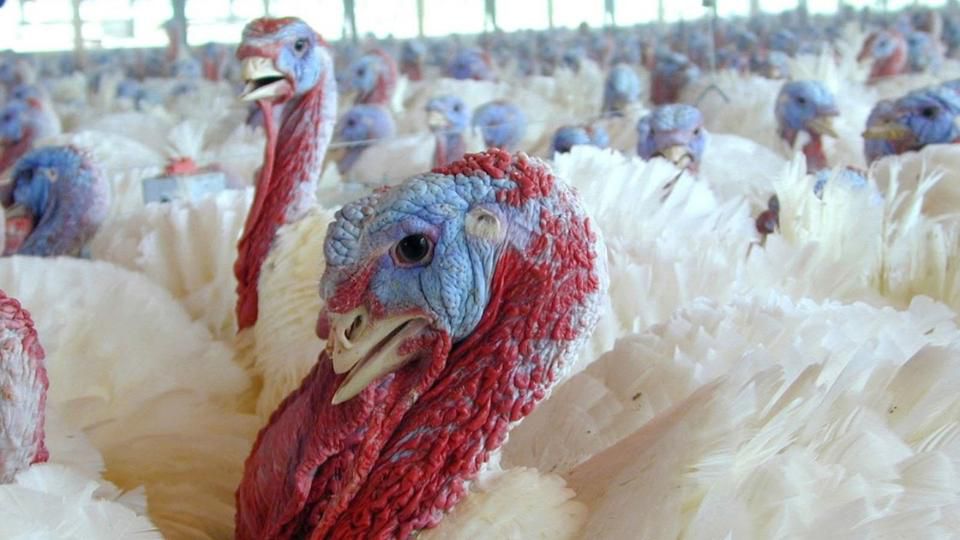
Jason & Carlee Christensen are turkey farmers and Farm Bureau members in Sanpete County. They keep their big turkeys safe and comfortable in state-of-the-art barns on his family’s farm. The Christensens and many other turkey farmers raise turkeys under Norbest brand. Norbest has been at the forefront for quality, food safety, and innovation for decades, including being the first to include the in-bird thermometer and presenting the first ‘Presidential Turkey’ to President Franklin D. Roosevelt in 1936, and shipping turkey to troops during World War II.
During the last three decades, turkey farming has evolved from a single-product, holiday-oriented business into an industry with a diverse line of food products available on a year-round basis. And consumption is growing, more than doubling since 1970. As of 2016, consumption of turkey was approx. 15 pounds per person. Nearly 90 percent of Americans surveyed by the National Turkey Federation eat turkey at Thanksgiving.
2. Fruit/vegetable farmer
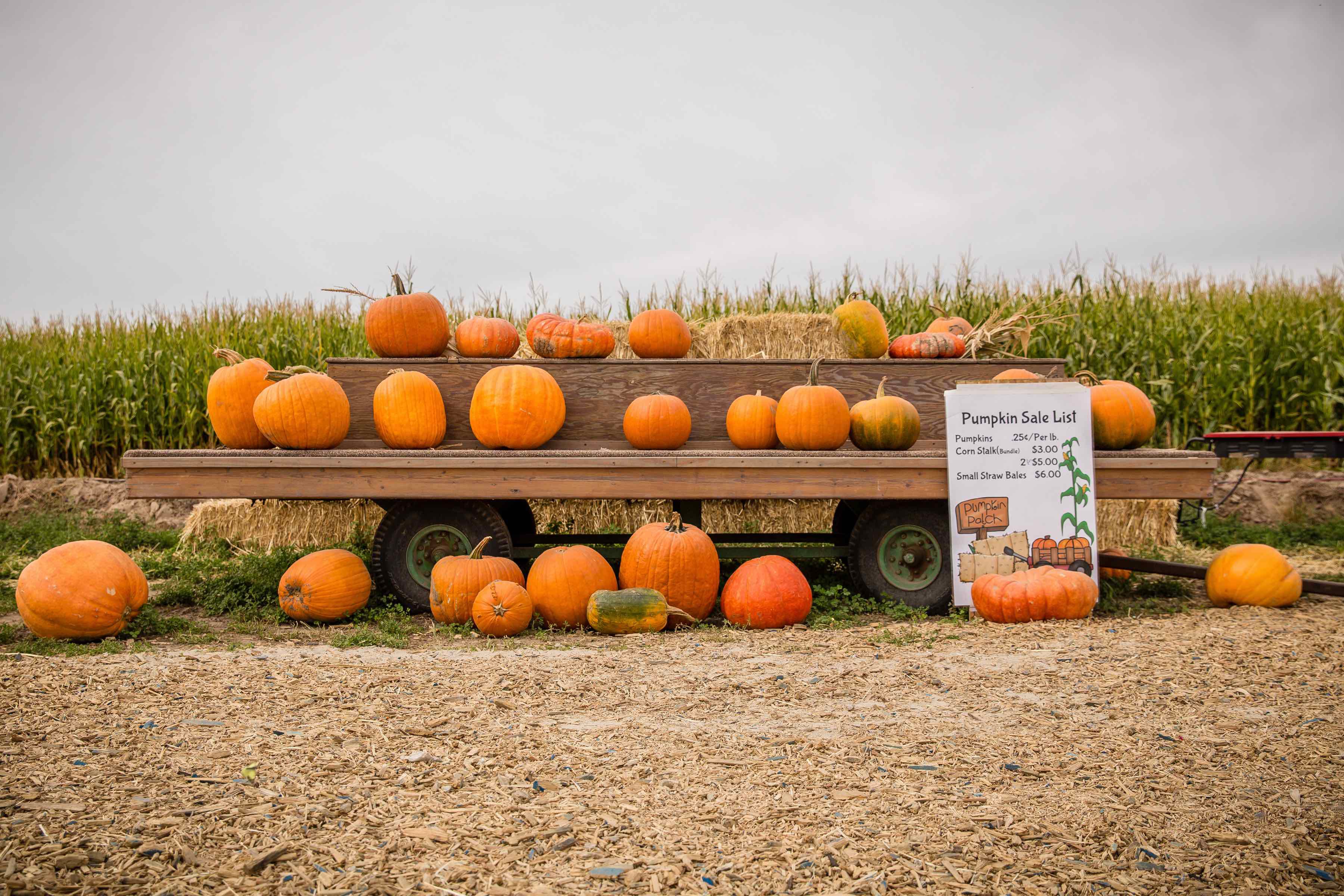
The typical Thanksgiving feast would be sad indeed without fruits and vegetables. Luscious pumpkin pie and tangy-sweet cranberry dishes top the list of favorite fruit options. Veggie dishes also abound with potatoes, sweet potatoes, squash, peas, carrots, celery, corn and green beans among the delectable options. Some of this produce is still available fresh, while others have been preserved via canning, drying or freezing.
Farmers such as Jeremy East (East Farms CSA in West Point), Tyson Roberts (Roberts Family Farms in Layton) and Kenny & Jam McFarland (McFarland Family Farms in West Weber) provide Utah residents with many of the pumpkins, potatoes, onions, corn, winter squash, sweet potatoes and other products enjoyed on the holiday table.
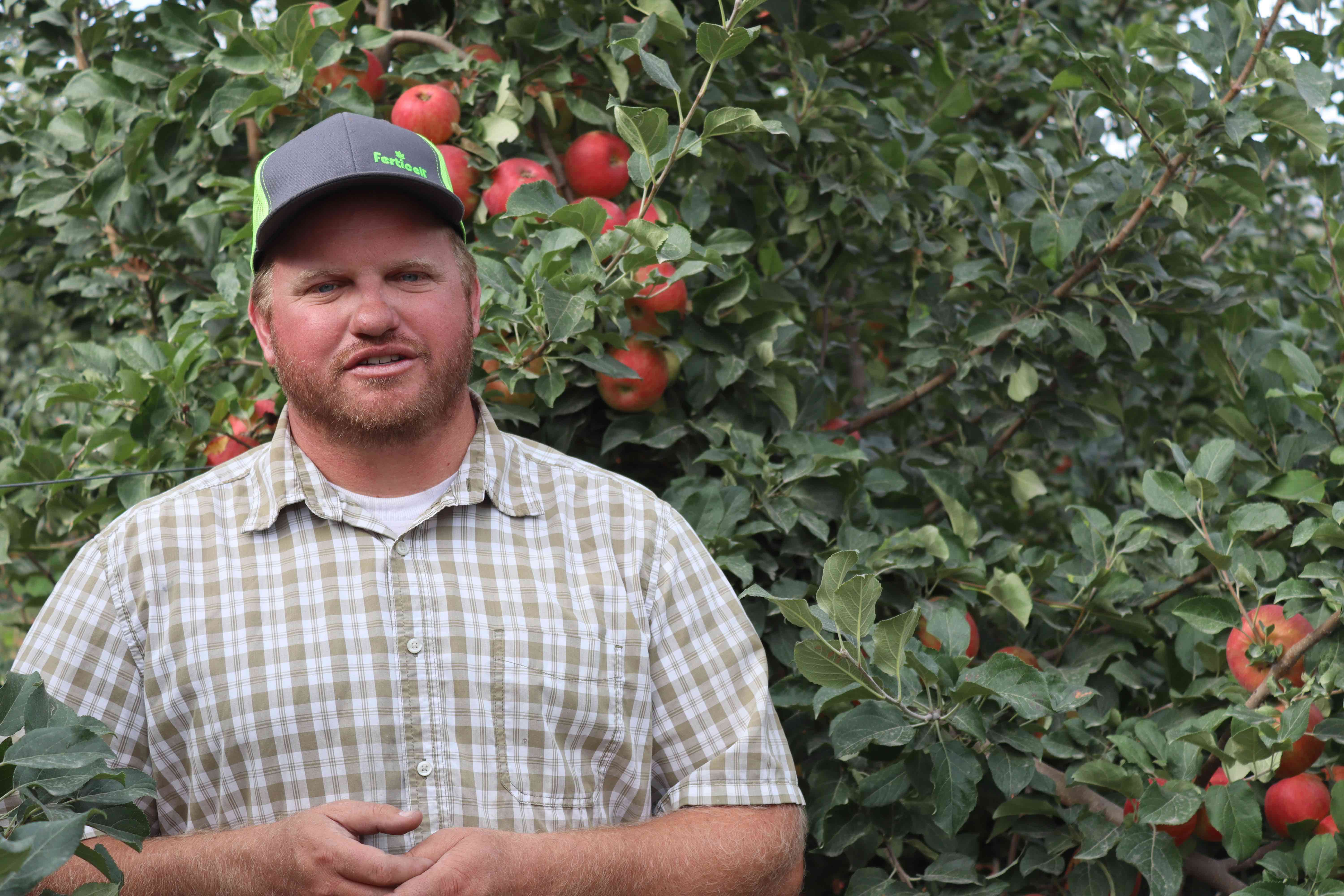
In the fruit section, delicious desserts feature Utah apples, peaches, pears, and cherries. Many fruit farming families including the Allreds, McMullins, Rowleys, Rileys, Fowers, Fergusons and more (in Utah County), Rileys & Tagges (Box Elder County) and Iversons & Freis (Washington County) provide great fruit in the late summer and early fall for preserving throughout the year. Many of these same farms, and retail locations like Payson Fruit Growers or the Rowley’s Red Barn, can sell frozen tart cherries for use in pies or to improve traditional cranberry sauce, or sell apples to use in pies or apple crisp.
Similarly, many desserts and salads can feature Utah-grown pecans, pistachios, and walnuts from southern Utah.
3. Wheat farmer
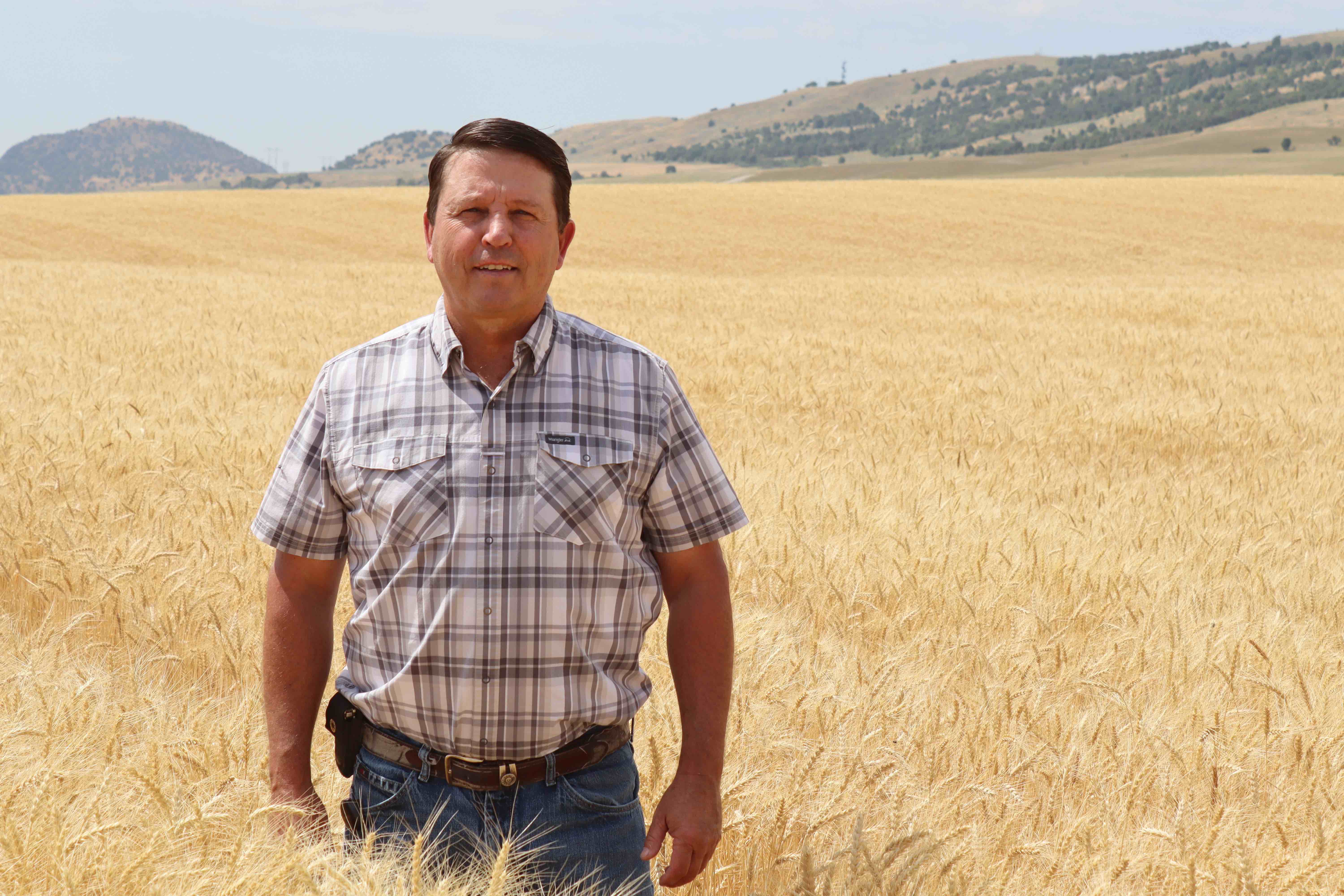
Although cornbread or rice dressing may have a place at the table, wheat is number one when it comes to ingredients used to make dinner rolls and stuffing for Thanksgiving. Farmers like Utah Farm Bureau President ValJay Rigby (pictured) in Cache County, Jeff Hill in Weber County, and Shay Lewis & Blaine Nebeker in San Juan County, and Steve Hanberg in Uintah County all raise some of the best wheat in Utah.
Did you know that one bushel of wheat produces about 42 pounds of white flour, which can be used to make 60-70 loaves of bread? One bushel of whole wheat yields even more – about 60 pounds of flour to make 90 loaves of wheat bread.
Perhaps you grind your own wheat, but chances are you buy it from the store or direct from a mill. Many are familiar with the famous look of the Lehi Roller Mills – as seen in the movies – but other great mills where you can buy local flour or bread mixes include Central Milling, Honeyville Grain, Big J Milling, or the Deseret Mills in Kaysville owned by The Church of Jesus Christ of Latter-day Saints.
4. Dairy farmer
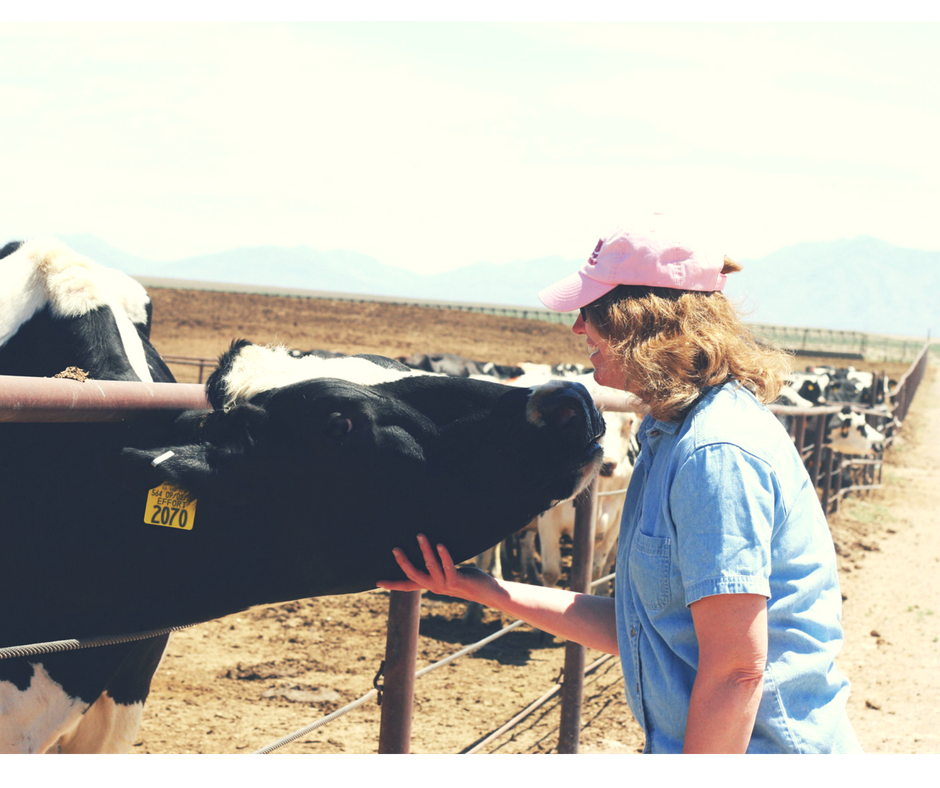
Butter, milk, yogurt, and whipped cream shine at Thanksgiving but most of us spend little time thinking about how these delicious dairy options make it from the farm to our tables.
The hard work of dairy farming starts hours before the sun rises and ends long after it sets. Dairy farmer Russ Kohler is proud of the care they provide their cows at his family’s farm in Midway and takes it a step further by taking that delicious milk and turning it into Heber Valley Artisan Cheese and other fine dairy products. Other fine dairy farmers are found throughout Utah, from Cache County in the north, down to Beaver and Iron Counties in the South, and including Maria Nye's dairy farm in Millard County, where she and her family provide milk for the Dannon yogurt facility in Utah.
5. Local farmers & others in the food chain
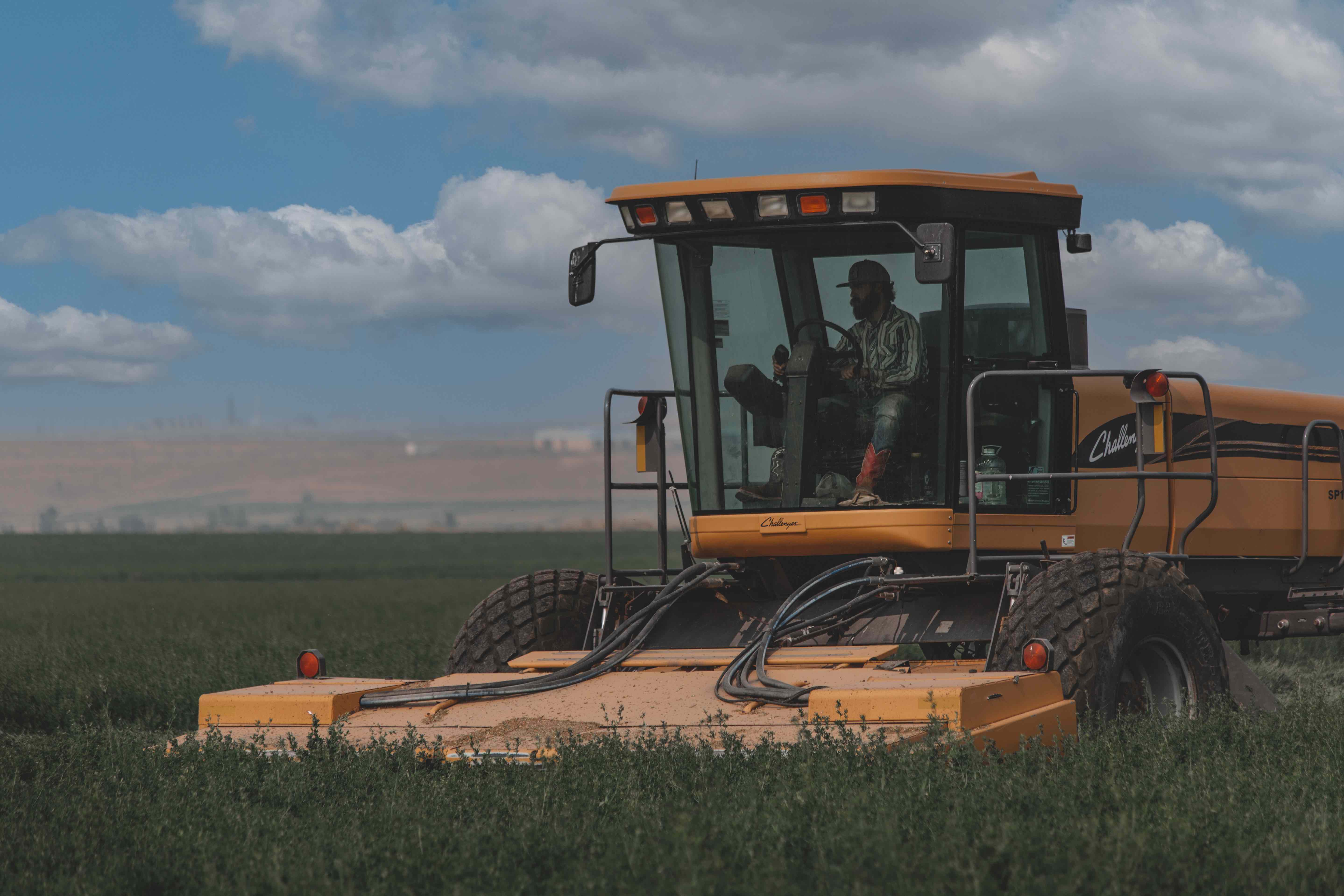
Some farmers sell the value-added foods they produce directly to consumers, through CSA subscriptions or at farm stands or one of the nation’s 7,800 farmers’ markets. Others have products available at local grocery stores or specialty retail outlets. Others may still not grow food directly consumed by people, but contribute by growing food for animals, such as alfalfa, oats, grain corn, and more. Or they provide veterinary care for animals, or drive the trucks that allow a head of lettuce to get from Yuma, Arizona to Logan, Utah the next day; or they are scientists looking to see how to make a crop more resistant to pests and use less pesticides, and the list can go on and on.
If you live in an area with access to local farmers, take a few minutes this holiday season to express your appreciation. If not, look to share goodness online using the hashtag #thankafarmer.
This Thanksgiving time, we truly do have much to be thankful for. So, when you’re between servings this year, thank a farmer!
Want more news on this topic? Farm Bureau members may subscribe for a free email news service, featuring the farm and rural topics that interest them most!
